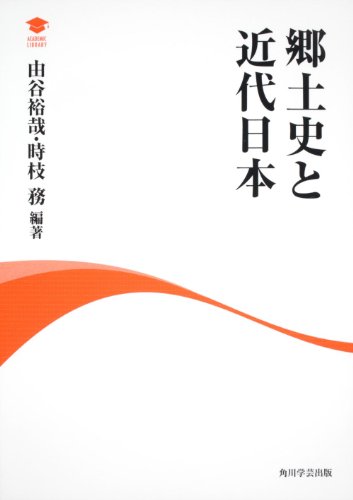12 0 0 0 OA <研究ノート>柳田國男の戦時言説としての氏神合同論
- 著者
- 由谷 裕哉
- 出版者
- 国際日本文化研究センター
- 雑誌
- 日本研究 = NIHON KENKYŪ (ISSN:24343110)
- 巻号頁・発行日
- vol.64, pp.199-222, 2022-03-31
本稿は、柳田國男(1875-1962)が主に戦時下で主張していた氏神合同論(本稿での仮称)を、彼の戦時言説として考察する。ここでの氏神合同論とは、柳田が『日本の祭』(1942年)や『神道と民俗学』(1943年)をはじめ、敗戦後しばらくまで主張していた氏神に関する議論で、異姓の家が共同して一つの氏神を祀ることを意味づけようとする理論である。柳田は氏神を氏の神と考え、それらが合同した(合併した、統合された)ことを複数の理由から説明したが、合同したとされる氏神の例は参照されず、各々の理由も帰納的に導かれたものではなかった。また、柳田のテキストを具体的な民俗事象との対応を気にせずに思想として読もうとする、いわゆる柳田研究においては、柳田のこの議論はほぼ等閑視されてきた。こうした柳田研究は柳田の戦争への関わりについても、彼が積極的に戦争協力をしなかったと捉えようとしていた。 それに対して本稿は、柳田の氏神合同論が提唱されるのを彼の戦時体制への協力姿勢が明確になる1942年と捉え、それ以前の彼の氏神論の検討から始める。柳田が氏神を祖霊と解釈しようとした始まりを1932年の「食物と心臓」であると捉え、2年後の1934年から3年間にわたり柳田の門下生を主な調査者として全国的に行われた通称・山村調査が、この仮説の検証を課題の一つとしたと考えられるとする。しかし、この検証は成功せず、さらに1936年頃から宗教学者の原田敏明が実証的な調査に基づき、氏神は地域的な性格を持ち、土地に即した存在であると主張した。 本稿は以上の1930年代における動向を踏まえ、1942年の『日本の祭』を端緒としたと考えられる氏神合同論を、個々のテキストの文脈に即して抽出し、柳田の戦時体制への対応とどう関わるかと併せて考察する。とくに氏神合同論と戦時体制への対応とが密接に結びつけられた言説として、『神道と民俗学』および長野県東筑摩郡での氏神調査に関わる1943年7月の講演に注目する。この講演以降の柳田の言説をも考慮し、氏神は戦時に軍神に続いて死ぬ人々の信仰を支える存在であるので、それが氏の神ではなく合同して産土(うぶすな)のようにローカルな神となったところに意味がある、と柳田が考えていたと導くことを結論とする。
9 0 0 0 郷土史と近代日本
- 著者
- 由谷裕哉 時枝務編著
- 出版者
- 角川グループパブリッシング (発売)
- 巻号頁・発行日
- 2010
5 0 0 0 OA 宗教的聖地とアニメ聖地(第十二部会,研究報告,<特集>第74回学術大会紀要)
- 著者
- 由谷 裕哉
- 出版者
- 日本宗教学会
- 雑誌
- 宗教研究 (ISSN:03873293)
- 巻号頁・発行日
- vol.89, no.Suppl, pp.402-403, 2016-03-30 (Released:2017-07-14)
3 0 0 0 OA 鈴木大拙と柳田國男の占領初期における神道・神社論
- 著者
- 由谷 裕哉
- 出版者
- 特定非営利活動法人 頸城野郷土資料室
- 雑誌
- 頸城野郷土資料室学術研究部研究紀要 (ISSN:24321087)
- 巻号頁・発行日
- vol.6, no.24, pp.1-21, 2021 (Released:2021-12-18)
- 著者
- 由谷 裕哉
- 出版者
- 日本宗教学会
- 雑誌
- 宗教研究 (ISSN:03873293)
- 巻号頁・発行日
- vol.83, no.4, pp.1258-1259, 2010-03-30 (Released:2017-07-14)
2 0 0 0 IR 神社明細帳による神社合祀の研究:小松市南郊外の事例
- 著者
- 由谷 裕哉 YOSHITANI Hiroya
- 出版者
- 金沢大学大学院人間社会環境研究科
- 雑誌
- 人間社会環境研究 = Human and socio-environmental studies (ISSN:18815545)
- 巻号頁・発行日
- no.40, pp.165-179, 2020-09-30
A shrine merger is the merger of one or several Shinto shrines with another shrine. Such mergers were especially promoted by the Home Ministry, based on the legal foundation of two Imperial edicts proclaimed in 1906. This paper is based on the Jinja-meisai-cho pertaining to five old villages located in the southern suburbs of Komatsu City. The Jinja-meisai-cho were the official Shinto shrine registers authorized by the Meiji government after 1872, submitted to the Home Ministry by every prefecture, with the prefectures keeping a duplicate. Information about shrine mergers was normally added in red ink in each Jinja-meisai-cho. The author applied to publicize the Jinja-meisai-cho of the above five villages, which are kept by the Ishikawa Prefectural Office, and acquired copies of them. The paper begins by examining how we should interpret information about the integration and abolition of the individual Shinto shrines contained in Ishikawa Prefectural Office's Jinja-meisai-cho, which were compiled in various formats. It outlines the following different types of shrine mergers: the merger of an abolished shrine with another shrine, and transfer to the precincts of another shrine to establish a new shrine (Keidai-sha). Among the preceding studies of shrine mergers, WATANABE Kei-ichi's paper of 2009 was the first to point out the importance of the latter type. Finally, the paper compares the Jinja-meisai-cho of the five Ishikawa villages with those of Kamisato Town, Saitama Prefecture, the topic of Watanabe's case study, and it clarifies the characteristics of the shrine mergers in the southern suburbs of Komatsu City.
2 0 0 0 IR アニメ聖地が聖地であり続けること : 尾道・城端の例から
- 著者
- 由谷 裕哉
- 出版者
- 三田社会学会
- 雑誌
- 三田社会学 (ISSN:13491458)
- 巻号頁・発行日
- no.21, pp.142-143, 2016-07
大会報告要旨
1 0 0 0 OA 中野重治「小説の書けぬ小説家」における「オン・パニマーエット」の背景
- 著者
- 由谷 裕哉
- 出版者
- 『人文×社会』編集委員会
- 雑誌
- 人文×社会 (ISSN:24363928)
- 巻号頁・発行日
- vol.2, no.7, pp.19-38, 2022-09-15 (Released:2022-09-19)
1 0 0 0 大洗磯前神社への聖地巡礼 : 奉納絵馬に注目して
- 著者
- 由谷 裕哉
- 出版者
- 北陸宗教文化学会
- 雑誌
- 北陸宗教文化 = Religion and culture (ISSN:09154078)
- 巻号頁・発行日
- no.29, pp.57-79, 2016-03
1 0 0 0 地方修験の宗教民俗学的研究
- 著者
- 由谷 裕哉
- 出版者
- 「宗教と社会」学会
- 雑誌
- 宗教と社会 (ISSN:13424726)
- 巻号頁・発行日
- vol.23, pp.174-176, 2017
- 著者
- 由谷 裕哉
- 出版者
- 山岳修験学会
- 雑誌
- 山岳修験 (ISSN:09150978)
- 巻号頁・発行日
- no.20, pp.21-32, 1997-11


